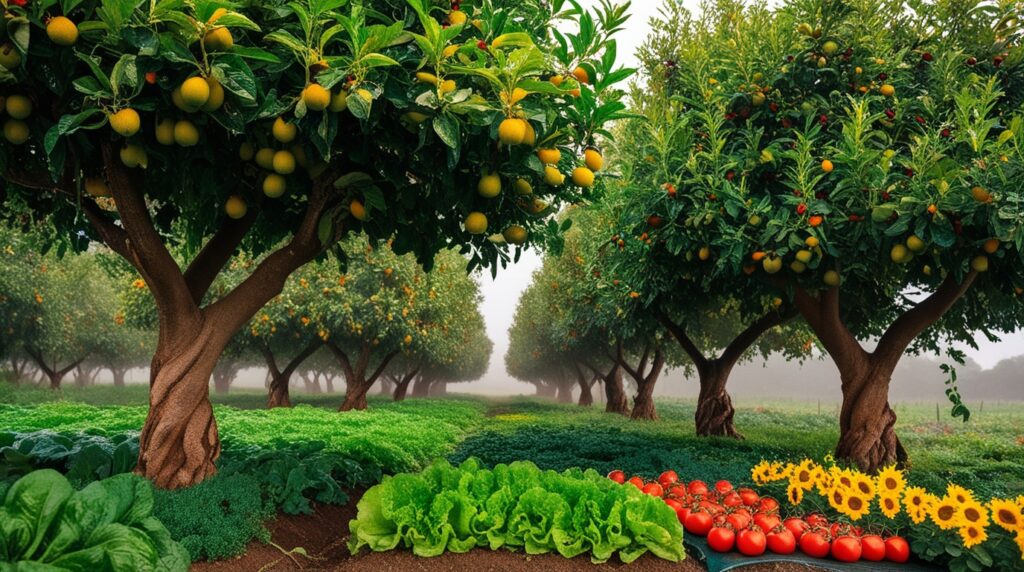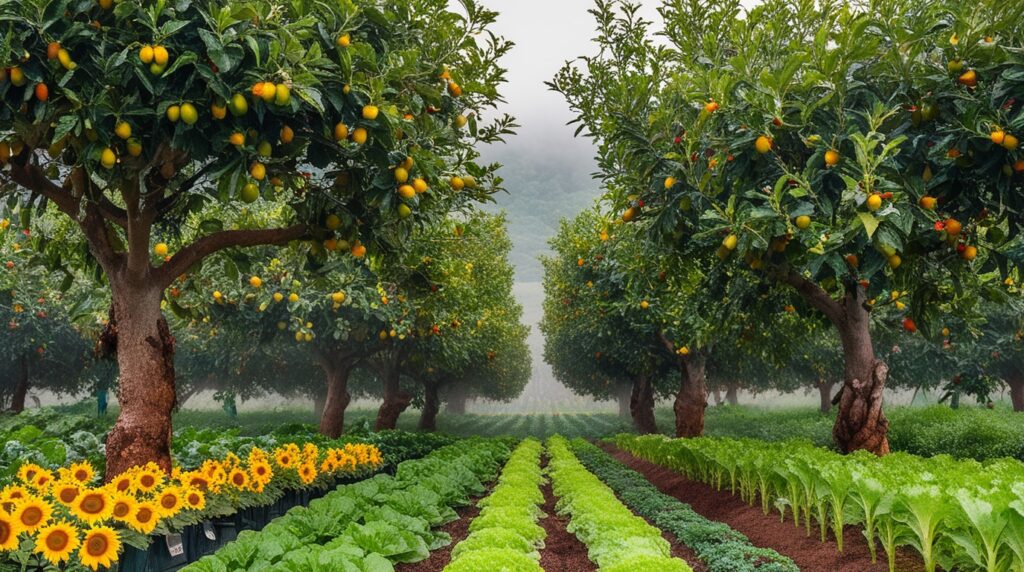
Sustainable farming practices aim to harmonize agricultural productivity with environmental stewardship, ensuring food security for present and future generations. Among the most effective methods are crop rotation, organic farming, and agroforestry, each contributing uniquely to soil health, biodiversity, and resource efficiency.
- Crop Rotation: Preserving Soil Vitality
Crop rotation involves planting different crops in a sequence across the same field. For example, alternating nutrient-demanding crops like corn with nitrogen-fixing legumes replenishes the soil.
Benefits:
Prevents soil depletion by diversifying nutrient usage.
Reduces pest infestations and diseases by disrupting life cycles.
Enhances soil fertility and improves yields over time.

- Organic Farming: Working with Nature
Organic farming replaces synthetic chemicals with natural inputs like compost and organic pest deterrents. This approach fosters an ecosystem-friendly balance.
Benefits:
Protects soil and water from chemical contamination.
Enhances biodiversity, promoting healthier ecosystems.
Meets growing consumer demand for sustainable and chemical-free food.
- Agroforestry: Combining Trees and Crops
Agroforestry integrates trees or shrubs with crops and livestock on the same land. This method boosts resilience and offers diversified farm income.
Benefits:
Mitigates soil erosion and improves water retention.
Sequesters carbon, helping combat climate change.
Provides shade and habitat for wildlife.

By adopting these practices, farmers contribute to a more sustainable food system while addressing challenges like climate change, resource depletion, and biodiversity loss. Sustainable farming is not just an agricultural method; it’s a commitment to nurturing the planet.






